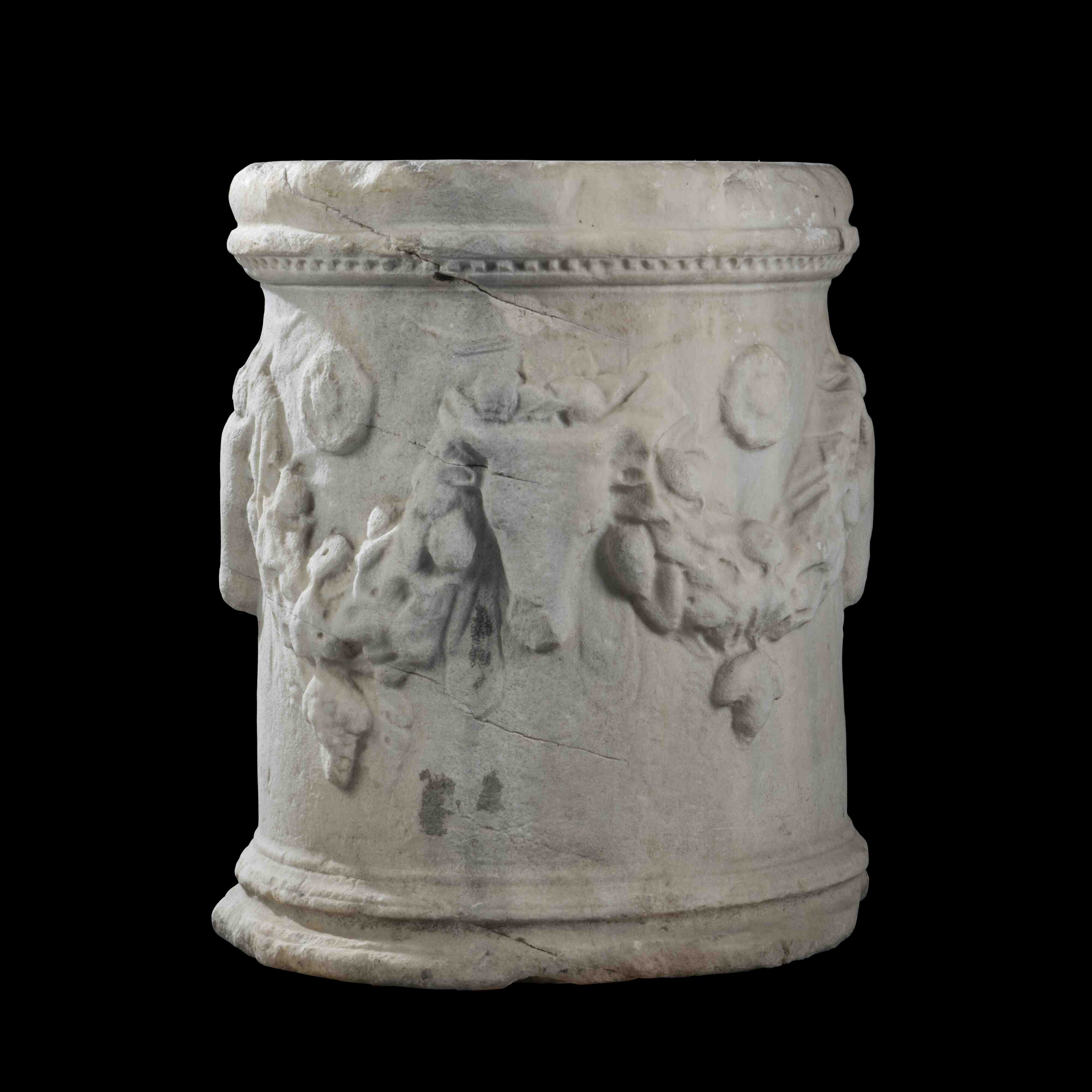With restrained figural decoration dramatically off-set against the black walls of this imposing krater, Myson has used the signature visual style of his contemporary, ‘the Berlin Painter’ to great effect. Both sides feature a young man associated with the symposium, involved in its preparation or in the revelry afterwards. The youth on the obverse walks to the left, broad shoulders turned frontally and body proudly displayed beneath the mantle slung over his shoulders. In his right hand he grasps a crooked cane, and in the right a garlanded pointed amphora which he turns his head to contemplate. His counterpart on the reverse is completely nude apart from the wreath in his hair, striding to the left with a twist to his upper body, and gaze turned behind and diagonally down. His leading hand carries a wineskin in an underhanded grip, and the other a cup balanced on his palm. These somewhat ungainly poses were presumably chosen to display the bodies beautiful to best advantage, with spare lines indicating anatomical details. The long strides combined with frontal chests hint at a shared rhythm and perhaps even dance step uniting their movement over both sides of the krater. The krater itself has an ovoid body, rim slightly convex on top, flat handle plate projecting beyond the rim at each side and supported by two columns, and an echinus foot. The obverse features a chain of black dotted pendant lotus buds between two black lines within a panel of reserve on the neck. Black rays above the foot.
Note
Myson was an Athenian red-figure painter, part of the so-called Pioneer Group (along with the Kleophrades Painter, the Berlin Painter, and other luminaries of the period) active between 500 and 475 B.C. He specialized in large shapes with the column krater being a notable favorite, and is known by signature as both a painter ("εγρ?φσεν") and a potter ("εποιεσεν") on a column krater from the Athenian Acropolis (Athens, National Museum Akr. 806; BAPD 202359). Myson's artistic personality is particularly evident in the decoration of this vase. On the front of the neck and in the rays above the foot, he refers to the past by using black-figure ornaments. Modern and especially striking is the way he arranges his figures in poses such that the articulation of forms stand out particularly well against the black background.








